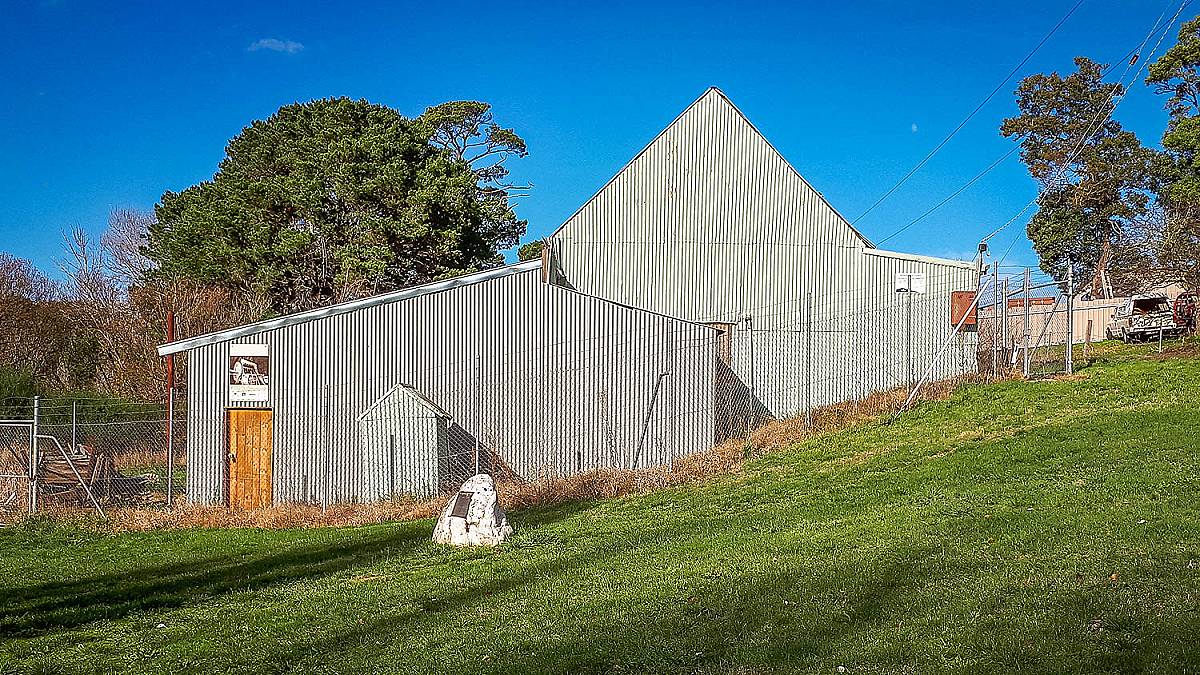One of six government batteries still remaining in Victoria, the Creswick State Battery stands on Battery Crescent overlooking a grassy field and the Creswick Creek below. The 1902 battery remains housed within a shed, complemented by a stone monument commemorating the 1851 discovery of gold in Creswick Creek.

From 1897 the Victorian government provided assistance to quartz gold
prospectors through the installation and operation of small quartz crushing facilities (known as government or
State batteries) in localities where no privately-owned batteries were available for public use. The batteries were erected in places where auriferous reefs showed promise, and were moved as demand (or lack of it) required.
Their number peaked between the wars, with a maximum of 33 in operation. Government crushing facilities were
quite small concerns, at first equipped with only three head of stamps, rising in 1904 to a standard of five head.
Sometimes the batteries were equipped with 6-heads. The batteries were originally powered by steam, but
producer-gas, oil, and electricity eventually replaced steam power.
The Creswick State battery was installed in
1902 and is one of the six that still survive in Victoria. The others are Maldon, Wedderburn, Rutherglen, Bright
and Egerton.

A plaque at the Creswick State Battery displays the following text:
This avenue commemorates the arrival of the early gold fossickers on Creswick Creek - 1851. From their discovery a town, district and nations was born. Erected sesquicentenary, 2001.
A thirty page book titled
Thumps In The Night: The story of the Creswick State Gold Battery was written by
Stephen Barnham and published in 2001. The cover provides the following text:
Quartz crushing batteries were a very noisy affair. Many gold towns had several thumping their way through the night. At midnight on Saturday they would stop for the Sunday Sabbath day. The town's people would then lie awake all night. Disturbed by a ghostly silence that had settled over the town.
State Gold Batteries
From the late 19th century, assistance was provided to gold miners by the Victorian Government through the installation and operation of small gold batteries. These were known as State or Government Batteries, and were installed in areas where there were no private batteries available for public use.

